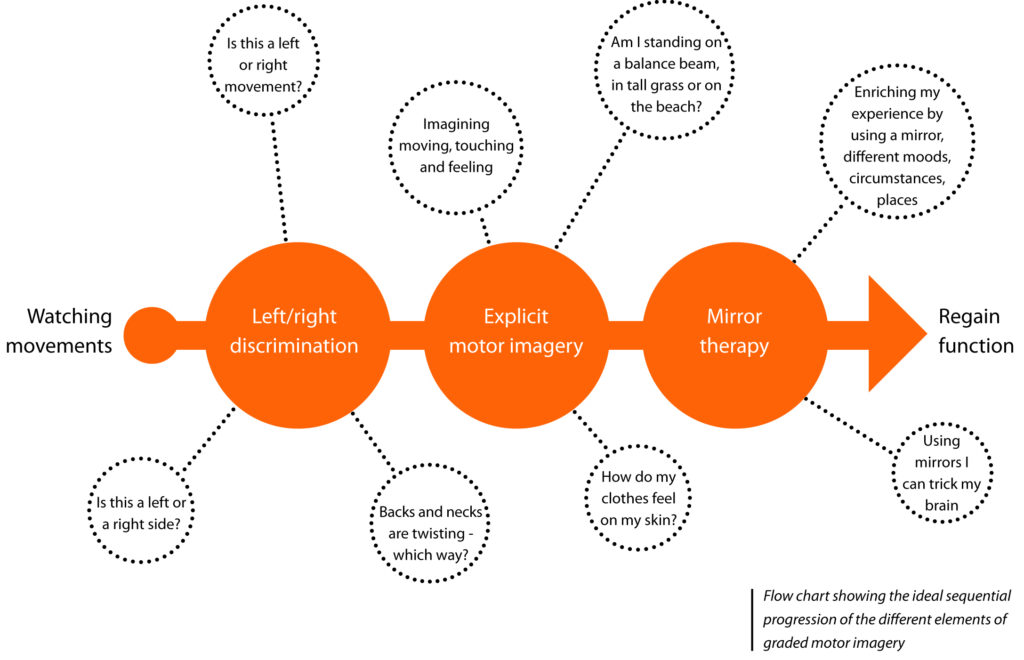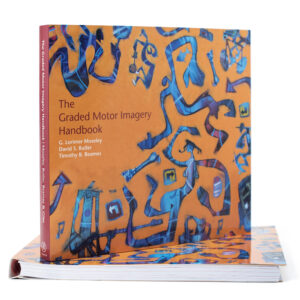Graded Motor Imagery
We now know that your brain is adaptable and changeable throughout your entire life. By exercising your brain in measured and monitored steps, which increase as progress is made, Graded Motor Imagery (GMI) can treat difficult and ongoing pain problems. GMI is the most up-to-date rehabilitation program – based on the latest science and clinical trials – to treat many complex pain and movement problems. Three unique stages of treatment techniques are followed, each exercising your brain in different ways.

A three-stage synaptic exercise process
The three different treatment techniques include left/right discrimination training, explicit motor imagery exercises and mirror therapy. These techniques are delivered sequentially but require a flexible approach from the patient and clinician to move forwards, backward and sideways in the treatment process to suit the individual. With patience, persistence and often lots of hard work, GMI gives new hope for treatment outcomes.
Stage 1. Left/right discrimination
The ability to identify left or right images of their painful body part(s). This ability appears to be important for normal recovery from pain. The good news is that the brain is plastic and changeable if given the right training for long enough. More info and training tips for Stage 1.
Stage 2. Explicit motor imagery
Essentially thinking about moving without actually moving. Imagined movements can actually be hard work if you are in pain. This is most likely because 25 percent of the neurones in your brain are ‘mirror neurones’ and start firing when you think of moving or even watch someone else move. By imagining movements, you use similar brain areas as you would when you actually move. This is why sports people imagine an activity before they do it. More info and training tips for Stage 2.
Stage 3. Mirror therapy
If you put your left hand behind a mirror and your right hand in front, you can trick your brain into believing that the reflection of your right hand in the mirror is your left. You are now exercising your left hand in the brain, particularly if you start to move your right hand. Sounds tricky!
PS. Mirrors are cheap and you may not need drugs. More info and training tips for Stage 3.
Interested in taking a course?
We also offer a Graded Motor Imagery course for clinicians. If you are a clinician, or if you would like to talk to your clinician about our course, view the course trailer and our course schedule. View GMI courses here.
The Graded Motor Imagery Handbook
We recommend that anybody with a chronic pain state learns more about the GMI process and talks to their clinician about options to include brain training exercises as part of a comprehensive rehabilitation program. The Graded Motor Imagery Handbook, arising from the last two decades of neuroscience, clinical trials and clinical reasoning science, is for both clinicians and pain sufferers.
Print book | ePub
Recognise Apps for iOS: Hand | Foot | Back | Neck | Shoulder | Knee
Recognise Apps for Android: Purchase at Google Play store
- TEST your ability to quickly and accurately recognise an image of a body area as either left or right (‘left/right discrimination’).
- TRAIN your brain and harness its neuroplasticity using a range of tools.
- Video: How to use the Recognise App

